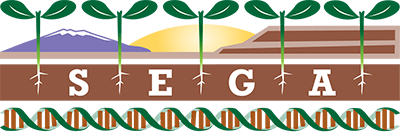You are here
Community heritability measures the evolutionary consequences of indirect genetic effects on community structure.
Publication Type:
Journal ArticleSource:
Evolution; international journal of organic evolution, Volume 60, Issue 5, p.991 - 1003 (2006)ISBN:
0014-3820URL:
http://www.ncbi.nlm.nih.gov/sites/entrez?Db=pubmed&DbFrom=pubmed&Cmd=Link&LinkName=pubmed_pubmed&LinkReadableName=Related%20Articles&IdsFromResult=16817539&ordinalpos=3&itool=EntrezSystem2.PEntrez.Pubmed.Pubmed_ResultsPanel.Pubmed_RVDocSumhttp://www.ncbi.Keywords:
Animals, Arthropods, Computer Simulation, Environment, Evolution, Molecular, Genetic Variation, North America, Phenotype, Populus, Selection, Genetic, TreesAbstract:
<p>The evolutionary analysis of community organization is considered a major frontier in biology. Nevertheless, current explanations for community structure exclude the effects of genes and selection at levels above the individual. Here, we demonstrate a genetic basis for community structure, arising from the fitness consequences of genetic interactions among species (i.e., interspecific indirect genetic effects or IIGEs). Using simulated and natural communities of arthropods inhabiting North American cottonwoods (Populus), we show that when species comprising ecological communities are summarized using a multivariate statistical method, nonmetric multidimensional scaling (NMDS), the resulting univariate scores can be analyzed using standard techniques for estimating the heritability of quantitative traits. Our estimates of the broad-sense heritability of arthropod communities on known genotypes of cottonwood trees in common gardens explained 56-63% of the total variation in community phenotype. To justify and help interpret our empirical approach, we modeled synthetic communities in which the number, intensity, and fitness consequences of the genetic interactions among species comprising the community were explicitly known. Results from the model suggest that our empirical estimates of broad-sense community heritability arise from heritable variation in a host tree trait and the fitness consequences of IGEs that extend from tree trait to arthropods. When arthropod traits are heritable, interspecific IGEs cause species interactions to change, and community evolution occurs. Our results have implications for establishing the genetic foundations of communities and ecosystems.</p>
- Log in to post comments
- Google Scholar
- RTF
- EndNote XML
- RIS
Theme by Danetsoft and Danang Probo Sayekti inspired by Maksimer
